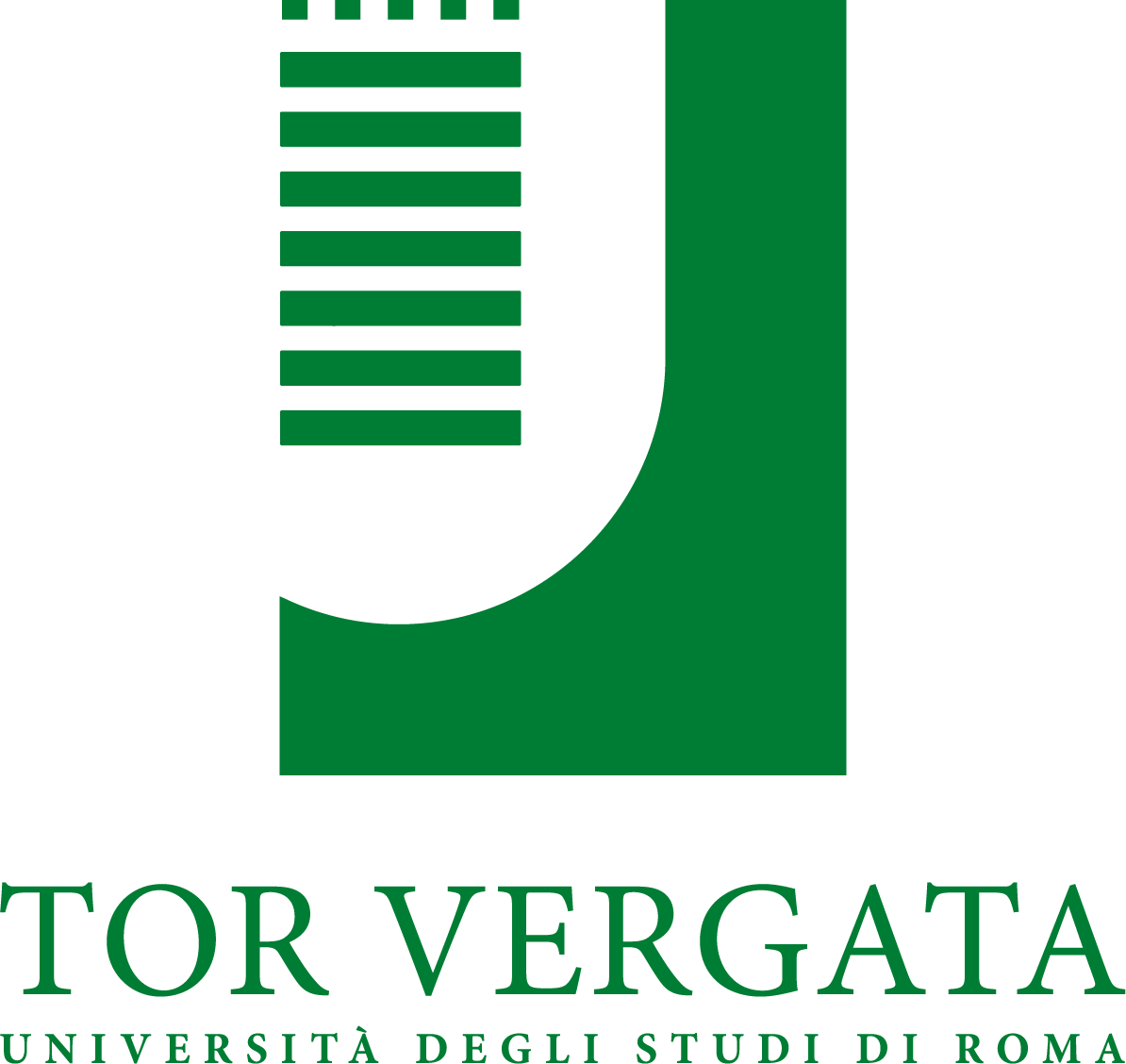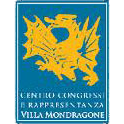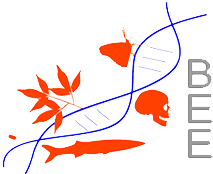MOLECULAR ARCHAEOANTHROPOLOGY
STAFF AND COLLABORATIONS
Olga Rickards (Professor)
Cristina Martinez-Labarga (Research Associate)
Flavio de Angelis (Laboratory technician)
Gabriele Scorrano
Laura Anzivino
Sara Varano
Luca Gasparri
CENTER OF MOLECULAR ANTHROPOLOGY FOR ANCIENT DNA
Founded in 1996 as part of the Laboratorio di Antropologia, the laboratory is a state-of-the-art facility dedicated to the extraction and analysis of ancient biomolecules from historical, archaeological and paleontological specimens. The lab houses a small group of researchers working on a diverse range of projects with a world focus and a broad agenda. Whether it be ancient DNA from some of Africa’s first farmers or, closer to home, dietary investigations of ancient Romans, we aim to provide innovative solutions to anthropological studies using the latest molecular techniques.
For further information and details of commercial services we offer please enquire here.
Partner of the IRICH Joint Research Unit
Facilities
Our suite of laboratories features physically separate contamination resistant facilities dedicated to the extraction and PCR amplification settings of ancient DNA from archaeological specimens. The extraction and pre-PCR analysis of ancient DNA are carried out in the new highly specialized aDNA laboratory of the Departmental Centre of “Molecular Anthropology for Ancient DNA Studies” of the Università degli Studi di Roma Tor Vergata, recently realized in the monumental complex of Villa Mondragone, Monte Porzio Catone, Rome(http://www.villamondragone.it/). The laboratory offers all the state-of-the-art facilities for aDNA studies, which consist of individual ‘cleanroom quality’ working spaces and dedicated vertical and horizontal laminar cabinets, with separate filtered air-supply systems, which allow researchers to work in isolation. The facility is maintained at positive pressure, UV and HEPA filtered and have restricted access, designed to minimize the possibility of contamination with extant human DNA. In addition, all equipment and supplies within the facility are subjected to regular UV sterilisation.
In other two laboratories located in the spaces of the Molecular Anthropology section of the Department of Biology pre- and post-amplification products are respectively processed and analysed. Also these laboratories offer all the state-of-the-art facilities for DNA and aDNA studies present in the laboratory of Villa Mondragone
Our laboratory equipment includes:
· ABI 3100 Avant DNA Analyzer
· ABI 7700 “TaqMan®” real-time sequence detection system
· GeneAmp and Perkin Elmer PCR engines
· Protein and DNA Electrophoresis apparatus
· Spectrophotometers
Contact
For further information regarding activities at the laboratory please contact:
Centro di Antropologia Molecolare per lo studio del DNA antico,
Dipartimento di Biologia,
Università di Roma “Tor Vergata”,
Via della Ricerca Scientifica 1,
00133 Roma
tel. +39-0672594348; fax +39-06-2023500,rickards@uniroma2.it
We also offer competitive commercial rates for the following service:
- ancient DNA extraction and sequence analysis
- bone collagen preparation for stable isotope analysis
Please contact us at the above address for further details.
PROJECTS
A molecular approach to the study ancient populations
The location of the cemetery itself, excellent bone preservation, varied types of burials and broad demographic structure allowed us to investigate the following through biomolecular analysis:
1. Residence mobility and genetic origins of the population through the extraction and analysis of mtDNAs and strontium isotope analysis.
2. Diet of the population through carbon and nitrogen stable isotope analysis. In particular we are interested in the quantity of marine resources that were consumed by various ‘groups’ defined by their burial status and genetic structure.
The project aims to reconstruct the peopling of Italy within the context of the Mediterranean Basin. In order to test the extent of the genetic impact of various populations upon Italian peoples, a mitochondrial DNA (mtDNA) based research program on both extinct and extant populations from different Mediterranean regions has been undertaken. Until recently this kind of studies has relied largely on indirect evidence from the genetics of extant populations, and the information gained from cultural, historical and anthropological sources. The possibility to study aDNA have enabled us to compare directly genetic diversity between extinct populations and their extant counterparts, providing a temporal dimension to the study of molecular evolution.
These comparisons have generated independent data to address archaeological issues concerning migration, population replacement, lineage extinction, inbreeding, and the genetic relationships of ancient human populations. Moreover, aDNA studies have helped clarify mother/children relationships in the cases of multiple burials and sex determination of young or fragmentary individuals.
Another target of the project is the reconstruction of the dietary variability of the ancient populations as well as the migrations, if any, during their lifetime. To reach these goals carbon, nitrogen and sulphur stable isotope analysis of bone collagen were applied to ancient human and animal remains in order to determine the diet. While, the degree mobility was inferred through high resolution strontium and oxygen stable isotope analysis of biogenic trace elements preserved in tooth enamel and bone.
The biomolecular approach was applied to earlier key Neolithic sites from southern Italy to resolve long-standing issues concerning the origins and dispersals of early farmers in Italy, the impact that the arrival of agriculture had on pre-existing indigenous groups in terms of demography, genetic change and subsistence and the extent that their legacy is observable today.
Biological and cultural heritage of the central-southern Italian population trough 30 thousand years. EPIC (Eredità della Popolazione dell’Italia Centro-meridionale)
For years it has been possible to reconstruct aspects of our evolutionary past in only two ways: studying the morphology of ancient human remains, or analyzing the DNA of modern populations in the light of theoretical evolutionary models. Technical complications which were difficult to overcome meant that data on individuals from the past were very limited: whether in the sense that they were related almost exclusively to the mitochondrial genome, or in the sense that the ancient samples did not reach dimensions sufficient to allow statistically robust conclusions.
Thanks to recent advances in molecular characterization techniques allowing genetic capture through hybridation and ultra-massive sequencing of complete mitochondrial genomes and of specific genomic regions together with new bioinformatic and biostatistic methods of data analysis, we can nowadays study the DNA of individuals from the past directly and on an unprecedented scale. The most important advantage of ultra deep sequencing is that it can help to overcome the
contamination problem in ancient DNA studies on modern human remains by exploiting molecular properties that would make it possible to distinguish ancient endogenous DNA from modern exogenous contamination. In addition, genomic selection by hybridization capture makes it possible to simultaneously analyze several genomic regions, in both mitochondrial and nuclear DNA, from small quantities of sample allowing to greatly increase genotyping resolution in ancient samples.
This research program aims to study at a multi-disciplinary level some exceptional samples from central/southern Italy in a time frame that goes from the Upper Paleolithic to the Eneolithic age, comparing the results with present day populations. Particular attention will be paid to genetic and cultural changes in the past and nearer to the present regarding subsistence strategies, state of health, social complexity and relations with the environment, using the most advanced cutting edge methods in the bio-molecular , bio-informatic, bio-statistic and archeo-antropological field. The paleo-botanical study will also allow cultivar recovery of alimentary interest so as to develop controlled cultures without genetic alterations and contaminants that in the past accumulated during evolution and induced the present day problems about bio-security (monoculture, antibiotic and pesticide resistance, etc.) EPIC’s final goal is to fill the gaps in knowledge of certain crucial phases in human demographic history and reconstruct a highly-defined picture of the biological characteristics of the populations over time found in our territory. This will realize the possibility of arriving at a detailed knowledge of how our genome evolved across time – something that only three years ago would have been almost inconceivable.
The project aims to reconstruct the peopling of Italy within the context of the Mediterranean Basin. In order to test the extent of the genetic impact of various populations upon Italian peoples, a mitochondrial DNA (mtDNA) based research program on both extinct and extant populations from different Mediterranean regions has been undertaken. Until recently this kind of studies has relied largely on indirect evidence from the genetics of extant populations, and the information gained from cultural, historical and anthropological sources. The possibility to study aDNA have enabled us to compare directly genetic diversity between extinct populations and their extant counterparts, providing a temporal dimension to the study of molecular evolution.
These comparisons have generated independent data to address archaeological issues concerning migration, population replacement, lineage extinction, inbreeding, and the genetic relationships of ancient human populations. Moreover, aDNA studies have helped clarify mother/children relationships in the cases of multiple burials and sex determination of young or fragmentary individuals.
Another target of the project is the reconstruction of the dietary variability of the ancient populations as well as the migrations, if any, during their lifetime. To reach these goals carbon, nitrogen and sulphur stable isotope analysis of bone collagen were applied to ancient human and animal remains in order to determine the diet. While, the degree mobility was inferred through high resolution strontium and oxygen stable isotope analysis of biogenic trace elements preserved in tooth enamel and bone.
The biomolecular approach was applied to earlier key Neolithic sites from southern Italy to resolve long-standing issues concerning the origins and dispersals of early farmers in Italy, the impact that the arrival of agriculture had on pre-existing indigenous groups in terms of demography, genetic change and subsistence and the extent that their legacy is observable today.
Other samples from different Italian sites, from the Palaeolithic to the Middle Ages, have also been analyzed, in collaboration with several Italian and other European colleagues: Balzi Rossi, Arene Candide, Romito, Grotta delle Veneri, Samari, Fontenoce di Recanati, Sant’Angelo Muxaro, Ticchiara, Madonna di Loreto, Monte Vodice, Velia, Ipogeo degli Aureli, Ferento, Santa Severa.
These works are funded by the MIUR (Ministry of Education, University and Research) under the “Programma di Ricerca scientifica di Interesse Nazionale” entitled:
“Dietary variability and genetic origins of Ancient Human Populations: a combined ancient biomolecular approach” (PRIN 2005, prot. 2005057557_001, scientific national coordinator: prof. Olga Rickards),
“Origin and diffusion of farming in central-southern Italy: a multidisciplinary approach ” (PRIN 2008 – prot. 2008B4J2HS, scientific national coordinator: prof. Olga Rickards) and
“Biological and cultural heritage of the central-southern Italian population trough 30 thousand years. EPIC (Eredità della Popolazione dell’Italia Centro-meridionale)” (PRIN Anno 2010-2011 – prot. 2010EL8TXP, scientific national coordinator: prof. Olga Rickards).
PhD Thesis: Dietary variability, mobility and genetic origins of early farmers of southern Italy: an integrated biomolecular approach- Roberta Lelli (a.a. 2010-2011)
PhD Thesis: Biomolecular characterization of a early Neolithic population from central Italy. Gabriele Scorrano (a.a. 2011-2012)
PhD Thesis: The Roman necropolis of Velia -a molecular approach- Maxime Muespach (a.a. 2010-2011)
MOLECULAR ARCHAEOANTHROPOLOGY References:
Craig, O.E., Biazzo, M., O’Connell, T.C., Garnsey, P., Martínez-Labarga, C., Lelli, R., Salvadei, L., Tartaglia, G., Nava, A., Renò, L., Fiammenghi, A., Rickards, O., Bondioli, L. (2009) Stable Isotopic Evidence for Diet at the Imperial Roman Coastal Site of Velia (1st and 2nd centuries AD) in Southern Italy. American Journal Physical Anthropology vol. 139 (4):572-83.
Ottoni, C., Koon, H.E.C., Collins, M.J., Penkman, K.E.H., Rickards, O., Craig, O.E. (2009). Preservation of ancient DNA in thermally damaged archaeological bone. Naturwissenschaften, vol. 96:267-278.
Ottoni, C., Martínez-Labarga, C., Vitelli, L., Scano, G., Fabrini, E., Contini, I., Biondi, G., Rickards, O. (2009).Human mitochondrial DNA variability in Southern Italy. Annals of Human Biology vol. 36 (6): 1-27.
Messina, F., Scorrano, G., Martínez Labarga, C., Rolfo, M.F., Rickards, O. (2010) Mitochondrial DNA variation in an isolated area of Central Italy. Annals of Human Biology, vol. 37 (3):385-402.
Craig, O.E., Biazzo, M., Colonese, A.C., Di Giuseppe, Z., Martinez-Labarga, C., Lo Vetro, D., Lelli, R., Martini, F., Rickards, O. (2010) Stable isotope analysis of Late Upper Palaeolithic human and faunal remains from Grotta del Romito (Cosenza), Italy. Journal of Archaeological Science vol. 37: 2504-2512.
Martínez-González, .L.J., Martínez-Espín, E., Alvarez, J.C., Albardaner, F., Rickards O, Martínez-Labarga, C., Calafell, F., Lorente, J.A.(2012) Surname and Y chromosome in Southern Europe: a case study with Colom/Colombo. European Journal of Human Genetics. vol. 20: 211-216, ISSN: 1018-4813, doi: 10.1038/ejhg.2011.162
Lelli, R., Allen, R., Biondi, G., Calattini, M., Conati Barbaro, C., Gorgoglione, M.A., Manfredini, A., Martínez-Labarga, C., Radina, F., Silvestrini, M., Tozzi, C., Rickards, O., Craig, O.E. (2012) Examining dietary variability of the earliest farmers of south-eastern Italy. American Journal of Physical Anthropology ,vol. 149: 380-390, ISSN: 0002-9483.
Gasbarrini, G., Rickards, O., Martínez-Labarga, C., Pacciani, E., Chilleri, F., Laterza, L., Marangi, G., Scaldaferri, F., Gasbarrini, A. (2012) Origin of celiac disease: How old are predisposing haplotypes? World Journal Gastroenterology; vol. 18(37): 5300-4. doi: 10.3748/wjg.v18.i37.5300.
Ciaffi, R. Lelli, R. Müldner, G. Stantcheva, K Fischetti, AL, Ghini, G., Craig O. E., Milano,F., Rickards, O., Arcudi, G., Martínez-Labarga C. (2013) Palaeobiology of the Medieval Population of Albano (Rome, Italy): A Combined Morphological and Biomolecular Approach. International Journal of Osteoarchaeology (in press) DOI: 10.1002/oa.2316
Scorrano, G., Brilli, M., Martínez-Labarga C., Giustini, F., Pacciani, E., Chilleri, F., Scaldaferri, F., Gasbarrini, A., Gasbarrini, G., Rickards, O. (2014) Paleodiet reconstruction in a woman with probable celiac disease: a stable isotope analysis of bone remains from the archaeological site of Cosa (Italy). American Journal of Physical Anthropology vol. 154(3):349-56. doi: 10.1002/ajpa.22517.
Scorrano G, Valentini F, Martínez-Labarga C, Rolfo MF, Fiammenghi A, Lo Vetro D, Martini F, Casoli A, Ferraris G, Palleschi G, Palleschi A, Rickards O. (2015) Methodological strategies to assess the degree of bone preservation for ancient DNA studies. Annals of Human Biology vol. 42(1):10-19. doi: 10.3109/03014460.2014.954614.
NATIONAL AND INTERNATIONAL COLLABORATIONS
Dr Michelle Alexander (Department of Archaeology, BioArCh, University of York)
Eduardo Arroyo, Universidad Complutense Madrid, Spain
Oliver Craig, BioArCh, Departments of Biology, Archaeology and Chemistry, University of York, Heslington, York, UK
Jose A. Lorente, Pfizer – Universidad de Granada – Junta de Andalucía Centre for Genomics and Oncological Research (GENYO), Granada, Spain
Fabio Macciardi. University of Irvine, Calilfornia. USA
Asssumpcio Malgosa, Universidad Autonoma Barcelona, Spain
Gundula Müldner, Department of Archaeology, University of Reading, Whiteknights PO Box 227, Reading RG6 6AB, UK
Claudio Ottoni, Laboratory of Forensic Genetics and Molecular Archaeology, Center for Archaeological Sciences, Katholieke Universiteit Leuven, Belgium.





Università di Tor Vergata